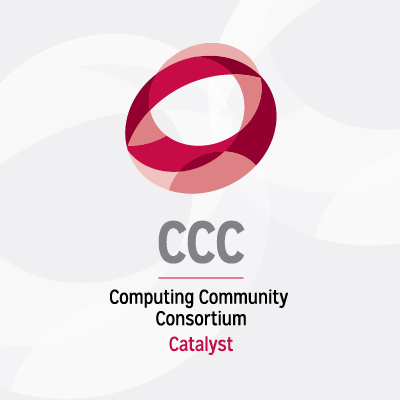As artificial intelligence (AI) continues to influence nearly every sector of society, institutions across academia, government, and industry are recognizing the need for dedicated leadership to guide the responsible development and application of these technologies. One emerging trend is the creation of Chief AI Officer roles, positions tasked with coordinating AI research, applications, and policy across complex organizations.
At the University of Utah, Computing Community Consortium (CCC) Council member Manish Parashar was recently appointed as the University’s inaugural Chief AI Officer. In this role, he leads AI strategy and engagements and coordinates its execution across the university, including through the One-U Responsible AI Initiative (One-U RAI). That initiative aims to leverage AI in interdisciplinary, translational ways to address challenges such as air quality, mental health, water sustainability, workforce development, and other key research priorities.
CCC recently spoke with Parashar to explore the strengths that position the University of Utah as a leader in AI research, the evolving responsibilities of Chief AI Officers, and opportunities for academic-industry collaboration.
What strengths does the University of Utah possess which enable it to be a key player in AI development?
“The University of Utah has a strong history of prioritizing and enabling multidisciplinary research teams and translational research,” says Parashar. “Some of the funding allocated to the One-U RAI will be dedicated to hiring researchers and inviting visitors who will bring a wide range of expertise, not only in AI technology, but also in the ethical, economical, legal and policy aspects of these systems. The University has also prioritized community building in this initiative. We created a Responsible AI Community Consortium, which connects members of the public with academics and industry researchers to give the community an opportunity to voice their priorities and for researchers to share best practices surrounding AI development.”
What is your role as Chief AI Officer, and how do you plan to draw on your previous experience at the White House’s Office of Science and Technology Policy (OSTP) and at the National Science Foundation (NSF)?
“I think my experience working within various government agencies has given me a lot of insight into the regulatory and policy aspects of AI, which is immensely helpful when weighing the pros and cons of various policy directions from the point of view of different stakeholders. We are working closely with the state Office of AI Policy and the legislature here in Utah to inform regulation that is cognizant of the possible negative impacts of AI, such as privacy and fairness considerations, while also allowing researchers and entrepreneurs to innovate. One of the things we are working on now is creating test beds and sandboxes for researchers to experiment safely without having to worry about regulations. This way, researchers can test new methods and theories and demonstrate they are safe before widespread deployment, and any mistakes or unforeseen issues can be caught early on.”
Do you have plans to collaborate with industry on multidisciplinary AI research projects?
“Absolutely. We invite industry members to our visitors program at the Scientific Computing and Imaging (SCI) Institute. Industry is an integral part of the Responsible AI Community Consortium and its special interest groups, and we also involve researchers from industry in proof of concept projects to prototype new ideas.”
Finally, what makes One-U RAI unique and what are you most excited about?
“The University of Utah puts so much effort into making it easy for people from different fields to come together and collaborate and innovate. It is such a supportive environment to work in, and the University really does everything it can to eliminate barriers and enable partnerships. Additionally, the confluence of regulatory support, workforce development, and infrastructure backing provided by One-U RAI help to enable impact and allow researchers to focus on research without getting bogged down by a lack of knowledge or resources in one area or another. The initiative is built on a very strong foundation and I’m so excited to see what we are going to be able to achieve through it.”
A New Role for a New Era of AI
Parashar brings extensive leadership experience to his new role as Chief AI Officer at the University of Utah. His work at the National Science Foundation’s Office of Advanced Cyberinfrastructure, the National AI Research Resource (NAIRR) Task Force, and the White House Office of Science and Technology Policy has positioned him at the intersection of research, innovation, and policy.
Dr. Parashar also joined the CCC Council in 2024 and serves on our Grand Challenges Task Force. He is a frequent author on our responses to requests for information from various government agencies and recently co-authored the joint CRA-Industry and CCC led whitepaper on Industry Engagement in Academic Research.
We congratulate Parashar on this important appointment and look forward to seeing the impact of his leadership as he helps shape the future of responsible AI research and collaboration.









